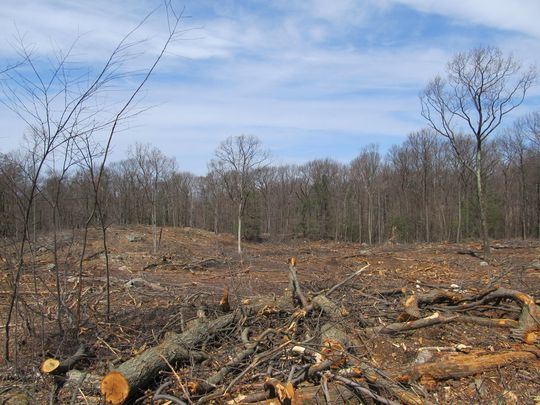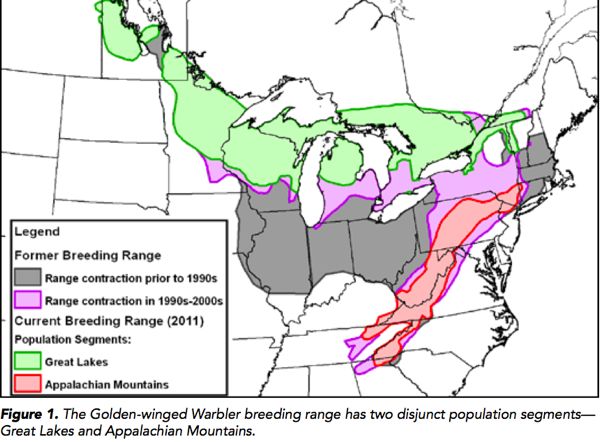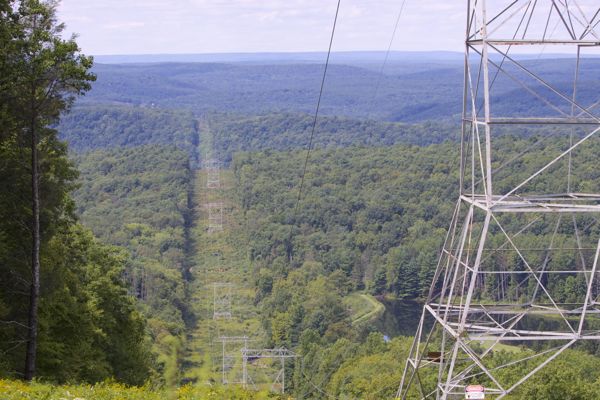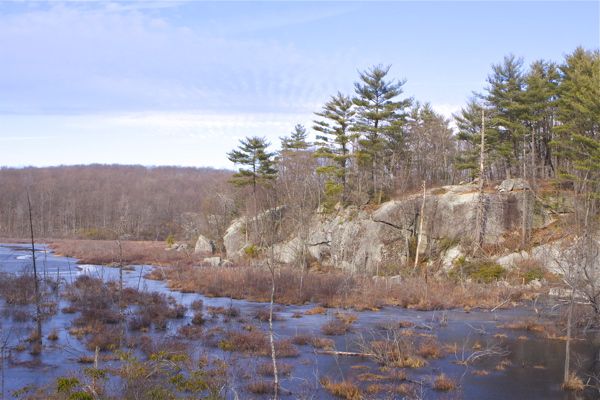Legislature Invokes Constitutional Power, Moves To Veto Christie DEP Flood Hazard Rules
Assembly Approves Veto Resolution on Last Day of Legislative Session
Big Win For Environmental Groups
[Update below]
At about 5:45 pm last night, on the final day of the legislative session, the Assembly approved ACR 249, to veto the Christie DEP’s proposed revisions to the Flood Hazard, Coastal Zone Management and Stormwater rules as inconsistent with legislative intent. The vote was 45 – 28 (2 abstain) along mostly partisan lines, with republicans backing Governor Christie.
We’ve recommended and urged that since June 1, 2015, the day the DEP proposed the massive 936 page regulatory “overhaul” and have written an entire series of posts, reached out to US EPA, testified to the NJ Legislature, and lobbied with environmental groups to make that happen.
My Trenton friends tell me that it took a letter to Speaker Prieto – spearheaded by Assemblyman McKeon and 17 other Assembly Democrats – to make it happen.
Politico nailed the story, so I’ll just touch on a few points:
With legislative veto, greens notch a rare win against Christie
By David Giambusso
7:22 p.m. | Jan. 11, 2016
TRENTON — The state Legislature sent the Department of Environmental Protection back to the drawing board on Monday, after the Assembly approved a “legislative veto” of proposed changes to flood hazard rules.
The bill (ACR249) was among the biggest priorities of environmental advocates and Democratic legislators who said the DEP’s rule change would compromise the state’s highest quality streams by allowing some development within the buffer zones of Class I streams.
The rule change was criticized by the federal Environmental Protection Agency and with the passage of a concurrent resolution Monday, the DEP will now have to take steps to change the rule. If it chooses not to change the rule to legislators’ satisfaction, both houses will vote again to reject the rule change outright.
“The ball’s now in the DEP’s court,” said Assemblyman John McKeon, who sponsored the resolution in the Assembly, after the vote. “They understand now the Senate and Assembly have spoken … It puts us in a position to exercise our constitutional authority.”
What’s Next? – DEP Goes All Orwell and Digs In
McKeon is exactly right – the ball is in DEP’s court.
My initial thoughts on what the Gov. and DEP might do next was that they would quietly just let the proposal expire and go back to the drawing boards in order to avoid further humiliation – and DEP was humiliated during this debate, with Ray Cantor, DEP Commissioner Martin’s right hand man, being caught misleading the Senate Environment Committee about EPA’s position on the proposal.
If the DEP management team were smart, they would realize that they could re-propopse 3 different rules and stealth the regulatory rollbacks that were so strongly opposed by environmentalists and vetoed by the Legislature.
But apparently there is little strategic thinking and even less humility at the DEP management team, because the Politico story reported that DEP is not blinking, but in Grand Orwellian Fashion instead digging in:
“We remain extremely confident that the proposed revisions of the rule reduce the complexities of duplicative regulations, while maintaining and, in some cases, raising our high standards for protection of our waterways and mitigation of flooding,” DEP spokesman Bob Considine said in a statement. “Specifically, it is not true that the 300-foot riparian zone has been eliminated from the proposed rule. It, in fact, retains the 300-foot stream buffer, which is far above and beyond any requirement of the federal Clean Water Act, which has no buffer requirements.”
Considine’s first point is spin.
As we’ve written, the current storm water management and stream encroachment rules do apply to the same stream “buffers”, but they are not “duplicative”. The rules serve different objectives: the storm water “SWRPA” buffer is designed to protect water quality and the stream encroachment “riparian zone” buffer is related to water quantity (volume) and designed to reduce the risks of flooding.
[Note: the DEP stream encroachment rules make this very clear (see NJAC 7:13-10.2
(b) The riparian zones established by this chapter are separate from and in addition to any other similar zones or buffers established to protect surface waters. For example, the Stormwater Management rules at N.J.A.C. 7:8 and the Highlands Water Protection and Planning Act rules at N.J.A.C. 7:38 establish 300-foot Special Water Resource Protection Areas and buffers, respectively, along certain waters. Furthermore, the Freshwater Wetlands Protection Act rules at N.J.A.C. 7:7A establish 50-foot and 150-foot transition areas along freshwater wetlands and other features that are also regulated under this chapter. Compliance with the riparian zone requirements of this chapter does not constitute compliance with the requirements imposed under any other Federal, State or local statute, regulation or ordinance.
Considine’s second point (“it’s not true“) is so misleading that it amounts to a flat out lie. First, no one has claimed that a “300 foot riparian zone has been eliminated”.
The DEP proposal repeals the 300 foot “SWRPA” buffer in the stormnwater rules and replaces it with the 300 for “riparian zone” buffer in the stream encroachment rules. That’s like trading a Mercedes for a Kia.
As we’ve written exhaustively (but let me summarize):
1) the riparian buffers in the stream encroachment rules only apply to streams with a “defined bed and bank” and do not regulate critical headwater streams (ephemeral, intermittent, headwater streams, swales and seeps, less than 50 acre drainages);
2) riparian buffers allow significantly more disturbance and provide far less protection of buffers than the SWRPA buffers in the storm water rules; and
3) SWRPA buffers are linked to other Clean Water Act rules and the Surface Water Quality Standards, which provide federal enforcement and other enforceable critical legal and regulatory policy triggers that the State stream encroachment rules lack.
Mr. Considine must know this, therefore he is either lying or incompetent (or perhaps both).
Constitutional Crisis?
The Legislature just exercised a Constitutional power and initiated a Constitutional separation of powers review process of checks and balances between the Executive and Legislative branches
This is a very big deal, and its rarely been done.
Technically, the next step is for DEP to either abandon the rule or modify the rule – here is the Constitutional process:
The Legislature may review any rule or regulation to determine if the rule or regulation is consistent with the intent of the Legislature as expressed in the language of the statute which the rule or regulation is intended to implement. Upon a finding that an existing or proposed rule or regulation is not consistent with legislative intent, the Legislature shall transmit this finding in the form of a concurrent resolution to the Governor and the head of the Executive Branch agency which promulgated, or plans to promulgate, the rule or regulation. The agency shall have 30 days to amend or withdraw the existing or proposed rule or regulation. If the agency does not amend or withdraw the existing or proposed rule or regulation, the Legislature may invalidate that rule or regulation, in whole or in part, or may prohibit that proposed rule or regulation, in whole or in part, from taking effect by a vote of a majority of the authorized membership of each House in favor of a concurrent resolution providing for invalidation or prohibition, as the case may be, of the rule or regulation.
If DEP fails to act in the next 30 days, the Legislature would then have to follow through and pass joint Resolutions in both Houses to finally veto the DEP proposal.
Based on DEP’s press statements, it looks like that will happen.
But what would come next (after a legislative veto)?
I assume that the preexisting rules would apply.
Obviously more to follow.
[Update: Oddly, NJ media seems to be ignoring this story. Odd, because:
1) The Legislature invoked a rarely used Constitutional power and the politics of Legislative Republicans backing the deeply unpopular Governor on a highly popular clean water issue is revealing of serious dysfunction;
2) the DEP policy and regulatory proposal at issue is hugely significant – it impacts flooding and stream buffers in almost every town in NJ.
3) It’s the first time I’m aware that Christie has suffered a political setback by the Legislature on his environmental rollback agenda.
4) It was a top priority of numerous environmental groups.
5) The C1 300 foot stream buffers and Clean Water Act based antidegradation policy were the foundation for the Highlands Act and remain controversial, as Christie DEP has abandoned the C1 program and rolled back related rules.
6) The DEP proposal was opposed by US EPA, FEMA and the NJ League of Municipalities – the latter two groups warned that it failed to meet National Flood Insurance Program requirements and jeopardized NFIP eligibility.
EPA’s unusual and harsh opposition drew the attention of Washington DC beltway environmental policy outlets.
So, what explains the media blackout of what is a pretty big story?
Nothing in Bergen Record (where they have 2 environmental reporters and despite all those C1 stream and reservoirs in Bergen & Passaic County, while they have time and space to publish bullshit AP oyster stories), NJ.Com, AP, or Gannett (APP, Morris Daily Record, etc) – the only stories I found were in Politico and NJ Spotlight. ~~~ end update]





